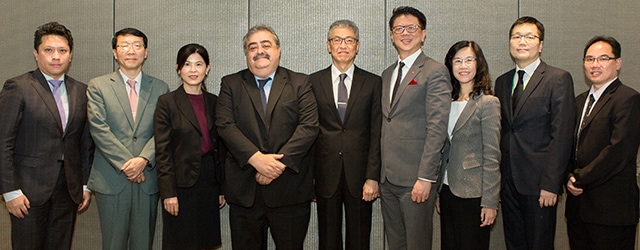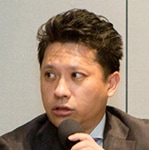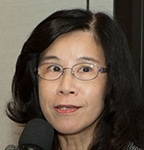Taiwan’s economy is still strong and well diversified, according to theparticipants in a recentGlobal Financeroundtable in Taipei. In the nearfuture, global trade tensions could be both a risk and an opportunityfor the local economy.

Global Finance: What are the prospects for economic growth in Taiwan in 2019?
Tzong-Yau Lin: In the first half of 2018, Taiwan’s economic growth was mainly built upon its external sector, and about two-thirds of the more than 3% growth rate was attributed to net exports. The second half will show slower growth, and the major driving force will be domestic demand. Consumption growth is expected to slow down a little bit in 2019. Overall, I think economic growth as well as inflation are expected to decelerate in 2019 compared to this year.
But there are a few future risks to Taiwan’s economy. The first is concern that the world economy—driven by major economies like the United States and mainland China—seems to be approaching a mature stage. Second is US-China trade friction and how it turns out. Rising global protectionism will not only affect global trade, but also spark reallocation in affected supply chains. This will affect Taiwanese companies both at home and abroad—in production costs, sales, profit and inclination to invest.
The third concern is that the pace of the monetary policy adjustment in major economies and a strong US dollar may drive international capital flow to become more volatile and undermine the stability of global financial markets, especially in emerging economies.
Sarah Hsu: I just want to emphasize that Taiwan’s GDP appeared to be slowing down in the third quarter of 2018 due to a loss of export momentum. In contrast, domestic demand likely remained solid thanks to stable growth in private consumption and a significant increase in capital-formation growth.
Linda Wen: The minimum-wage adjustment and corporate earnings actually are performing quite well. Those should contribute to the continued growth of domestic consumption. At the same time, infrastructure projects and private-sector investment are going to continue.
Jack Wang: Let’s look at the financial-market performance relative to other Asian economies: Taiwan lost about 10% year to date [November], but that is probably the lowest among the Asian economies. We saw Korea and Singapore indexes lose about 20% or more, and China down about 30%. And Japan is actually interesting, with 5% growth.
Taiwanese producers are very flexible. So, if you look at FDI over the long term, Taiwanese FDI into China and Hong Kong actually declined about 30% these last five years. However, there is 300% growth in [Taiwanese] FDI into other Asian countries. So, this is not because of Trump. It’s a long-term trend of Taiwanese firms trying to diversify and extend their coverage and supply chains.
Tony Phoo: We believe China’s economy will probably slow from the current 6.6% to probably closer to 6.4% in 2019. China growing at over 6% is still contributing about one-third of global GDP growth. We did an in-house study: If the US stops importing from China, the hit to Taiwan GDP would be about 1.8 percentage points. But the possibility of this happening is quite minimal, as it’s nearly impossible for the US to divert supply chains away from China. China will continue as a major player in manufacturing. Relocations to Taiwan would be one of a few positive spillovers to the Taiwan economy going into 2019. And we have seen some active policy coming from the Taiwanese government to secure this return investment.
Him Chuan Lim: While US-China trade tension is something that we need to watch, I think it’s more a disruption than a fundamental setback for Taiwan. Our main concern is more the slowdown in China itself.
Oliver Hsieh: I just want to add a few thoughts: 60% percent of our GDP is related to exports. In semiconductors, there is still opportunity for growth because of the demand in areas like 5G for mobile or artificial intelligence. But emerging markets are facing a lot of challenges, and this will reduce consumption of consumer electronics, which might affect the semiconductor business. Another business that’s supposed to have good opportunity is mobile. In some countries, mobile sales have slowed down, but I think opportunity is still there.
China-US trade tension doesn’t just have an impact on the industrial sector; it also has a large impact on the financial industry because Taiwan relies quite heavily on the market in China, and the banking sector has a lot of exposure to mainland China. This will affect performance and profits this year and may also affect GDP growth for Taiwan.
Shinwei Huang: In Taiwan, we’re all aware that most of our GDP is generated by exports of electronics and semiconductors. But on the theme of US-China tensions, we also think that there are a few opportunities—for example, on IC design, testing and measurement or on LEDs—where Taiwan will be able to catch up on orders that China may be shifting out to Taiwan. We think the textile industry also has the chance to get some orders from the Chinese side.
GF: Will these tensions affect the existing investments of Taiwanese companies in Mainland China? If we meet a year from now, do you expect any of the current numbers on investments in supply chains and logistics to have changed?
Him Chuan Lim: The goods which are already affected by tariffs are lower-end consumables, products for which many of our customers have already started finding alternatives outside of China. The trend didn’t start from this particular event. It was triggered by the higher cost of operations in China—whether land cost or labor cost—that sent them looking for alternatives in, say, Southeast Asia, in particular Vietnam, or Cambodia, Malaysia or Indonesia.
Electronics still aren’t affected. If you look at the biggest supply chain here, it’s really the Apple supply chain. But if you look at the component cost of an Apple product, 80% of those components are manufactured outside China.
One more point to add is that in the US-China trade war, there are categories of goods affected. The first category would be ICT [information and communications technology], the second automotive and automotive parts, and the third, ready-made garments and apparel. For Taiwan, the most relevant area would be the ICT space, and to a lesser extent the automotive industry, but that’s very small. In the apparel industry, a lot of plants have already been moved out of China. If anything, it’s the ICT part in Taiwan that will be disrupted. But as mentioned, the biggest of all is Foxconn, or Apple—which, again, can be managed.
Tony Phoo: We believe that a 10% tariff on exports can be easily managed through a slight depreciation of the renminbi, through streamlining production, through improving productivity or even if the end user is willing to absorb some extra cost. There’s no urgency to significantly change your capex plan for China over the next 12, 18 months.
But the story might be very different if we are looking at a 25% tariff. That cannot be easily mitigated. The Chinese authority will not allow a sizable depreciation of the currency, because it could destabilize its very own financial system. In order to mitigate this cost, a lot of it will have to come from the private sector. And for a small company with relatively weaker margins, it might actually strengthen the case for moving out of China.
Linda Wen: If you are going to export to US, then you definitely will be impacted by the trade dispute. Manufacturers will start to consider whether they should relocate. But don’t forget there’s Made in China 2025. From our conversation with some of our corporate clients, especially in the small and medium-sized business sector, they have been planning to increase investment in China and focus on the domestic market.
Jack Wang: Everybody says that China is too pricey, but the market is too good to ignore. So for everybody, except ICT and the technology sector, their number one choice [for relocation] is always Vietnam, right?
Oliver Hsieh: Taiwan’s investment in mainland China has been declining quite rapidly recently. But China has captured 50% of Taiwan’s investment since 1991. So, there’s a large exposure. There are three categories of Taiwanese investment in mainland China: one is for production in China of goods that are then exported to a foreign market; the second is for the production of goods for the local Chinese market; the third is for services in the mainland China market. Long term, I think a lot of businesspeople are still looking for opportunity to invest in mainland China.
T.-Y. Lin: According to our common analysis, it’s true that the trade tensions only had a modest direct impact on Taiwan. But we still have to be mindful of the indirect impact. The US-China trade war will affect demand for intermediate goods, and a large part of our exports relates to intermediate goods.
Sarah Hsu: The trade dispute has more or less made it more appealing for Taiwan’s companies operating in China to come back and relocate their manufacturing sites to Taiwan. But the government will need to address a number of issues in the first place, including stable supply of electric power, sufficient labor force and adequate production sites.
GF: The diversification of exports has been a consistent theme for Taiwan. Has this diversification increased?
Rick Lo: In recent years, Taiwan’s banking sector has been facing challenges such as industry migration and slowing population growth, resulting in a shrinking market size and overbanking, a long-term low interest-rate environment that narrows net interest spreads, and other structural problems. Therefore, how to reduce operation costs but enhance service quality becomes the core issue for Taiwan’s financial companies.
In order to make up for the slow growth of the domestic financial market, Taiwanese financial institutions proactively explored overseas business opportunities. In addition to keeping their eyes on China’s huge demand with the surge of financial services, they also actively engaged in the government’s Southbound Policy to accelerate the business establishment in Southeast Asia. However, the local authorities still set several limitations on foreign investors. Taiwan government assistance is essential to break through the bottleneck.
Linda Wen: In terms of the diversification in Asia, India is also promoting domestic production. So a lot of these manufacturers, if they want to distribute there, will have to move to India for production.
Shinwei Huang: If we look at the geographic distribution of Taiwan’s exports, we see that China has around 40% of the total, while North America and Europe have about 20% and Southeast Asia has about 17%. We need to have a stable power supply to attract companies to move back, or we will face competition from Southeast Asia and India.
Oliver Hsieh: In 2017, China only captured 35% of Taiwan’s total outbound investment. But for the Asian markets, the number tripled from 2010 to 2017. Taiwanese businesspeople already moved production to Asian countries, because in 2015 costs rose in China due to labor and environmental-protection laws.
It’s interesting: There are about 480 branches of Taiwanese banks abroad, and 40% of these offices are located in South Asia countries. The profits of overseas operations increased around 28%, but in South Asia profits have not increased; rather, they declined because competition in the South Asia market is very high. And it comes not only from local banks but also from Japanese and Korean and Chinese financial institutions.
Tony Phoo: I can’t imagine that Taiwan can rely less on trade. A market of 23 million is simply not enough, right? To maintain that competitiveness or to stay relevant in the global chain, then they have to venture into other areas. So, while we talk about this diversification in exports, it’s difficult to imagine Taiwan becoming less dependent on trade.
There are also several industries in Taiwan where there’s definitely a lot of room to grow, and thus mitigate the impact from a slowdown in global trade. I think [foreign] financial-services firms are all in Taiwan for the very same reason. The tourism sector, the hospitality sector, a wonderful medical system—there is still a lot of room for services to play a bigger role in making the economy less dependent on trade.
GF: The total amount of FDI into Taiwan has decreased. But some of you have suggested that trade tensions can draw FDI into Taiwan. What do you expect?
Jack Wang: We notice that the two biggest countries still investing in Taiwan are the US and Japan. For example, we expect a huge capex for wind power and maybe solar. Taiwan is full of liquidity, so it’s no problem at all to support maybe ten or more projects.
Him Chuan Lim: When we look at FDI, we need to look at it by sectors. In manufacturing, it depends on how Taiwan could support such kind of production activities, given that it’s quite a well-known fact that there is an increasing shortage of land. The cost of labor is something that we need to watch. The tax rate is not exactly that attractive, either, if you compare that with alternatives in Asia.
If you look at services, that’s where there is some upside, even though it’s quite competitive—at least for banking. We all know that Taiwan is overbanked. But despite that, we are still here and we continue to make more investments. We believe that there will be growing demand for wealth management, whether it’s for preservation, inheritance management or estate planning.
The new sectors that the Taiwanese government is pushing for, including green energy, are also in line with our own agenda, and that’s why we actively take part in that kind of financing.
More importantly, we believe that Taiwan is a very interesting place in terms of the concept of technology. On one end of the spectrum, you see very high-tech companies that probably produce, you know, more than 50% of the components of the gadgets that we use day to day. But if you look at how many of the SMEs operate, it’s still quite manually intensive.
GF: I wonder if that says something about the appeal these markets have for foreign investors and foreign institutions.
Sarah Hsu: In addition to the relative stability of Taiwan’s equity markets, the Taiwanese bourse is attractive in terms of its relatively low price-to-earnings ratio. On top of that, electronics shares comprise over half of Taiwan’s market, reflecting the fact that after nearly 40 years of development of the electronics industry, Taiwan has built a comprehensive electronic ecosystem and established a firm stronghold in the global supply chain.
Him Chuan Lim: Corporate governance at listed companies is also quite robust, quite transparent, so people do know what’s going on. They feel able to evaluate whether they want to make investments or not.
Shinwei Huang: From the fixed-income side, we can see that Taiwan’s financial markets have a big advantage over other countries nearby, which is the low funding rate. On the other hand, Taiwan’s financial institutions—unlike those of countries like Singapore or Japan—are less globalized and more conservative, and Taiwan is highly regulated.
Linda Wen: When we talk with our clients about who invests in Taiwan, they tell us that the current double-digit surplus versus the GDP is a plus. It makes them feel safe through turmoil.
Tony Phoo: The inclusion of the China market in key global indices will have a big impact. There’s no running away from China. My fear is there could be a crowding-out effect, that Taiwan might actually become less relevant as China continues to integrate its own markets with the global financial markets.
Him Chuan Lim: Competition is definitely something to contend with, not just on the business side but also in talent retention. And the ability to retain or attract talent is something that we need to confront in Taiwan.
Rick Lo: In the past two years, fintech has shifted from concept to application in Taiwan. In addition to widely used mobile payments, people can buy term-life insurance and get microfinance loans directly on the Internet. And the Financial Supervisory Commission (FSC) also shows an open attitude, with its approval of two online banking licenses for next year. With the gradual sharing of financial data, Taiwan’s financial industry could realize customized, ubiquitous services by incorporating data analysis to fulfill clients’ needs in a timely manner.
GF: In terms market cap to GDP, and also in terms of IPOs, how healthy is this market?
Tony Phoo: One particular strong point is there’s still a lot of wealth to be unlocked. Investors are still very used to traditional investment products that can be found elsewhere.
For the past 20 years now, if you look at the investment/GDP ratios, it has steadily declined. Currently, I think it’s just under 20% of GDP. But if you look at Korea, its investment/GDP ratio is still roughly about 30%. I think central banks mentioned it for many, many years, that there’s a lot of liquidity that needs to find ways to be more productive. Financial services can come into play in helping to unlock this wealth, and to create wealth for the next generation. It’s one way to sustain relatively high living standards even as we have to deal with aging populations. Japan has offered some good lessons that Taiwan can learn from.
GF: Let’s talk about virtual currency, and also the issue of innovation.
Jack Wang: Dr. Lin mentioned this use of technology by Taiwanese companies. In fact, it’s funny: We produce a lot of high-tech gadgets, but we are a bit slower to adopt them.
Him Chuan Lim: We actually think that Taiwan is going to be a very good market for digitization, because the infrastructure is already here. Connectivity is also very good. On the consumer banking side, Taiwanese banks are quite progressive. While they continue to innovate, they also continue to make it very easy for people to use cash. But on the business banking side, I think there is some work to do—and, going back to the earlier question regarding how do we help provide more financing to all these SMEs, I do think data is important.
Today, as a business, you can’t open an account online; only individuals can do that. Even then, there are different classes, and for a business to do that, there’s a concern that you can’t really verify that business unless you see the company or the person physically. So there are some regulatory hurdles to clear on KYC [Know Your Customer]. But we believe with technology, you should be able to actually validate it quite well.
 T.-Y. Lin is director general of the economic research department at the Central Bank of the Republic of China (Taiwan). He has held various roles at the central bank since first joining in 1988, including deputy director general, adviser, New York office representative and assistant director general. He holds a PhD in economics from the University of Southern California, a master’s degree in economics from Oklahoma State University and a bachelor’s degree in international business from Soochow University in Taiwan.
T.-Y. Lin is director general of the economic research department at the Central Bank of the Republic of China (Taiwan). He has held various roles at the central bank since first joining in 1988, including deputy director general, adviser, New York office representative and assistant director general. He holds a PhD in economics from the University of Southern California, a master’s degree in economics from Oklahoma State University and a bachelor’s degree in international business from Soochow University in Taiwan.
 Oliver Hsieh is chief risk officer E.Sun Financial Holding. He has corporate-wide oversight responsibility for risk management governance/framework, credit, market, operational, treasury services risk management, model validation and internal control. He was appointed chief risk officer in March 2011. Prior to joining E.Sun in 2000, Hsieh worked at ICBC for 10 years. He has a BA in business administration and industrial management from the National Cheng Kung University, Taiwan, and an MA in applied finance from Macquarie University, Australia.
Oliver Hsieh is chief risk officer E.Sun Financial Holding. He has corporate-wide oversight responsibility for risk management governance/framework, credit, market, operational, treasury services risk management, model validation and internal control. He was appointed chief risk officer in March 2011. Prior to joining E.Sun in 2000, Hsieh worked at ICBC for 10 years. He has a BA in business administration and industrial management from the National Cheng Kung University, Taiwan, and an MA in applied finance from Macquarie University, Australia.
 Tony Phoo is chief economist Standard Chartered Bank Taiwan. He joined the bank in 2007 as an economist and covers Taiwan as well as other regional economies. He was previously senior economist for the fixed income department with Capital Securities between 2003 and 2006. Prior to that, he held similar responsibilities in economic research with DBS Bank and Oversea-Chinese Banking Corporation in Singapore. Phoo has an MA in international economics, banking and finance from the University of Wales, Cardiff.
Tony Phoo is chief economist Standard Chartered Bank Taiwan. He joined the bank in 2007 as an economist and covers Taiwan as well as other regional economies. He was previously senior economist for the fixed income department with Capital Securities between 2003 and 2006. Prior to that, he held similar responsibilities in economic research with DBS Bank and Oversea-Chinese Banking Corporation in Singapore. Phoo has an MA in international economics, banking and finance from the University of Wales, Cardiff.
 Dr. Sarah Hsu is executive vice president of Hua Nan Financial Holdings. Before joining Hua Nan, she worked at Bank of Taiwan as head of the Economic Research department and at the American Institute in Taiwan (AIT) as a senior economic specialist. Hsu was an economic researcher at Taiwan’s Central Bank before joining AIT. She received her Ph.D. degree in economics from National Chengchi University in Taipei.
Dr. Sarah Hsu is executive vice president of Hua Nan Financial Holdings. Before joining Hua Nan, she worked at Bank of Taiwan as head of the Economic Research department and at the American Institute in Taiwan (AIT) as a senior economic specialist. Hsu was an economic researcher at Taiwan’s Central Bank before joining AIT. She received her Ph.D. degree in economics from National Chengchi University in Taipei.
 Shinwei Huang is head of the Debt Capital Market division of Taishin International Bank Taiwan. He is responsible for primary bond market origination, structure financing projects and sales activities. Prior to this, he was the director of VTB Capital and vice president of Credit Suisse, specializing in fixed-income products and structured finance. Shinwei has been covering various projects and products in debt market since 2004.
Shinwei Huang is head of the Debt Capital Market division of Taishin International Bank Taiwan. He is responsible for primary bond market origination, structure financing projects and sales activities. Prior to this, he was the director of VTB Capital and vice president of Credit Suisse, specializing in fixed-income products and structured finance. Shinwei has been covering various projects and products in debt market since 2004.
 Linda Wen is head of Markets & Securities Services (M&SS) and Country Treasurer in Citibank Taiwan, managing M&SS products and sales, country balance sheet and liquidity. Prior to her current roles, Linda served as Risk Treasury Head. She started her Citi career in Taiwan Risk Treasury. Linda also represents Citi Taiwan at the Taiwan Foreign Exchange Foundation and on the Taiwan Bankers Association’s Risk Management Committee.
Linda Wen is head of Markets & Securities Services (M&SS) and Country Treasurer in Citibank Taiwan, managing M&SS products and sales, country balance sheet and liquidity. Prior to her current roles, Linda served as Risk Treasury Head. She started her Citi career in Taiwan Risk Treasury. Linda also represents Citi Taiwan at the Taiwan Foreign Exchange Foundation and on the Taiwan Bankers Association’s Risk Management Committee.
 Him Chuan Lim is general manager and CEO of DBS Bank Taiwan. Previously, he served as group head of Product Management for DBS Global Transaction Services; as group COO for DBS’ Institutional Banking Group and International Markets; and as head of Group Audit. Before joining DBS, Him Chuan worked for JPMorgan in Singapore and for PricewaterhouseCoopers in Singapore and New York. He holds a bachelor’s degree in accountancy (with honors) from the National University of Singapore and completed the Accelerated Development Programme (business leadership) at the Chicago Booth School of Business.
Him Chuan Lim is general manager and CEO of DBS Bank Taiwan. Previously, he served as group head of Product Management for DBS Global Transaction Services; as group COO for DBS’ Institutional Banking Group and International Markets; and as head of Group Audit. Before joining DBS, Him Chuan worked for JPMorgan in Singapore and for PricewaterhouseCoopers in Singapore and New York. He holds a bachelor’s degree in accountancy (with honors) from the National University of Singapore and completed the Accelerated Development Programme (business leadership) at the Chicago Booth School of Business.
 Jack Wang joined CTBC Bank in July 2010 as executive vice president and head of Global Treasury Sales, leading the division to serve the bank’s corporate and institutional clients worldwide. Mr. Wang served as head of Corporate Sales and Structuring of Citibank Taiwan from 2008-2010. Before that, he was the president and the head of Investor Sales for Citibank Securities Taiwan. He earned an M.B.A. from the Richard Ivey School of University of Western Ontario, Canada.
Jack Wang joined CTBC Bank in July 2010 as executive vice president and head of Global Treasury Sales, leading the division to serve the bank’s corporate and institutional clients worldwide. Mr. Wang served as head of Corporate Sales and Structuring of Citibank Taiwan from 2008-2010. Before that, he was the president and the head of Investor Sales for Citibank Securities Taiwan. He earned an M.B.A. from the Richard Ivey School of University of Western Ontario, Canada.
 Dr. Rick Lo is director of macros research at Fubon Financial Holdings. He received his Ph.D. in economics from the University of Pittsburgh. Before joining Fuban Financial in 2005, he was associate professor of economics at National Dong Hwa University (Taiwan).
Dr. Rick Lo is director of macros research at Fubon Financial Holdings. He received his Ph.D. in economics from the University of Pittsburgh. Before joining Fuban Financial in 2005, he was associate professor of economics at National Dong Hwa University (Taiwan).



